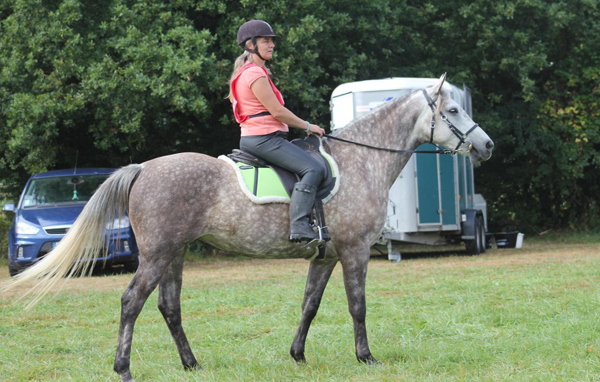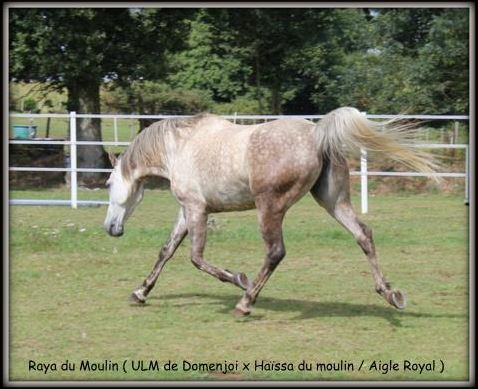Contenu


|
Ulm de Domenjoi (arabe) |
Zulus |
Palas |
|
Zazula |
||
|
Sbah Hani |
Ba Toustem |
|
|
Kercha |
||
|
Haissa du Moulin ( DSA ) |
Aigle royal |
Fawzan |
|
Alsinde |
||
|
Volcane |
|
|
|
|


- avril 2014 SOULAINES SUR AUBANCE
40 km : Classement : 4 sur 7
- mai 2014 SEICHES SUR LE LOIR
90 km : Classement : 5 sur 14
- juin 2014 LE Gâvre
60 km : Classement : 1 sur 4
- juillet 2014 Endurance des éoliennes
90 km VI : Classement : 1 sur 4

Raya débute en endurance le 25 Août 2013
![]() Course de la forêt du Gâvre le 25 Août 2013 :
Course de la forêt du Gâvre le 25 Août 2013 :
20 km ; FC départ 44/ FC finale 44 Classement : 3 sur 3
![]() Course de Mouliherne le 15 Septembre 2013 :
Course de Mouliherne le 15 Septembre 2013 :
40 km ; FC départ 40 / FC finale 40 Classement : 8 sur 22
![]() Course de Grandchamp des Fontaines le 29 Septembre 2013 :
Course de Grandchamp des Fontaines le 29 Septembre 2013 :
40 km ; FC départ 36 / FC finale 39 Classement : 4 sur 21
![]() Course de Cheix en Retz le 20 Octobre 2013
Course de Cheix en Retz le 20 Octobre 2013
60 km ; FC départ 36 / FC finale 40 Classement : 1 sur 11
Picture a kaleidoscope of shades and patterns decorating the
ranges of bearded dragons, each telling a one-of-a-kind genetic
tale. From vibrant oranges to subtle pastels, the world of
bearded dragon morphs is a fascinating one. As you begin untangling the hereditary mysteries behind these captivating animals, you will find a entire brand-new degree of recognition for their appeal and complexity.
Let’s check out how genetics form the appearance of these precious reptiles and
uncover the tricks behind their enchanting morphs.
Hereditary Fundamentals of Bearded Dragons
When breeding bearded dragons, comprehending the hereditary fundamentals is necessary for
forecasting and creating particular morphs. Inheritance patterns play a important duty in figuring
out the traits gave from parent to spawn. Bearded dragons display numerous inheritance
patterns such as leading, recessive, and co-dominant, influencing exactly how genes are shared in their children.
Genetic anomalies likewise play a significant duty in developing one-of-a-kind morphs in bearded dragons.
These anomalies can emerge automatically or be intentionally bred
to improve certain attributes. Common hereditary anomalies in bearded dragons include color variations like hypo, leatherback, and transparent.
Recognizing these hereditary mutations is vital to precisely breeding bearded dragons to attain preferred morphs.
Typical Bearded Dragon Morphs
What are the features of usual bearded dragon morphs? Bearded dragons show
a variety of color variants, which are the result of selective
breeding patterns. Usual morphs consist of the classic "Normal," which features earthy tones of brownish, tan, and hints of red monster bearded dragon.
The "Citrus" change displays dynamic yellows and
oranges, while the "Hypo" morph has actually minimized black coloring, causing a lighter appearance.
Another popular morph is the "Translucent," characterized by transparent ranges and a special
appearance. Reproducing patterns play a critical role in establishing
the expression of these morphs. As an example, breeding
two dragons lugging the "Hypo" genetics increases the chance of producing children with the
Hypo morph. Similarly, reproducing dragons with the " Transparent" gene can result in offspring exhibiting
this distinct morph. Understanding the genetics behind these common morphs is necessary for breeders
looking to create specific color variants in bearded dragon spawn.